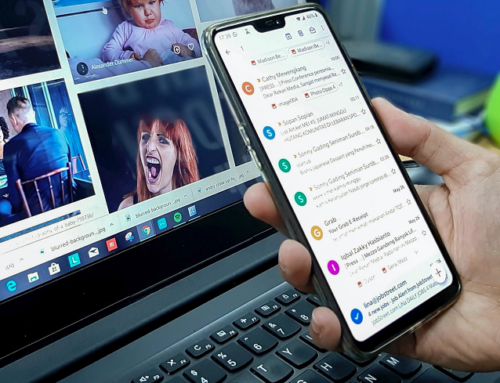Too often we see businesses that are focused on the cash aspect of their credit and collections management. While cash is important, it’s simply the result of effectively managing your accounts receivable credit and collections process. As such, your goals should not be based on cash improvements but rather, on improvements in your invoicing and customer communications plan and process. If you set the right goals and you attain them, the cash will come – I promise.
So what should your goals be? This will depend somewhat on your particular business needs, but some examples of goals are provided below to help you understand what is possible. No matter what goals you set, each should be measurable so you know if you’re reaching your goals or if there are other things you will need to do in order to attain the results you’ve set for your business. Here are five credit and collection goals you can set for your accounts receivable department.
Want something better than excel? Try Lockstep Inbox, our free AR application that will show you real time aging and other AR KPIs in minutes (yes, it’s free).
GOAL #1 IDENTIFY INVOICE PROBLEMS EARLIER
One of the best goals you can set is to identify invoice problems earlier in the process. If the invoice is incorrect, missing a customer purchase order number, or sent to wrong person or address, you are unlikely to get paid on time. It’s unlikely that you truly know how long it takes you to identify invoice issues today, but you should be able to set an easy goal to have someone review all invoices that are past due the day they are past due to ensure that they are correct.
Set this as an internal policy and the first step taken in your credit and collections process. You may even want to break this down further so that large dollar invoices are reviewed before they are sent to customers. After all, large invoices represent the bulk of your cash and the highest financial risk should the customer refuse payment due to invoice problems. Large dollar invoices will vary by business and should be clearly defined by your executive team. Some companies may consider a $1,000 invoice a large invoice while others may consider a large invoice $50,000 or more.
GOAL #2 SEND THE INVOICE SOONER
Again, you may not know how long it takes you to send invoices to customers today, but you should be able to set a goal to get invoices to customers a lot faster. This will be the result of processing invoices more frequently (every day or week compared to once or twice a month) and by implementing an electronic invoice system to send invoices to customers electronically via email, fax, or electronic data interchange (EDI). The customer has to have the invoice as soon as possible in order for them to pay you on time. There’s no excuse for late invoice delivery with today’s technology options. In an ideal scenario, the customer should receive the invoice the day that it’s processed but even small businesses should be able to send invoices at least once a week giving the customer enough time to process payment before the invoice due date.
GOAL #3 REMIND CUSTOMER TO PAY
Very few companies have time to remind their customers to pay their bills, but this is a great goal to set. If you don’t have a credit and collection management system you may want to focus reminders on larger invoices. You should remind customers that they have invoices that will be due in the next 3-5 business days that still have an outstanding balance. In most cases, a simple reminder is all you need in order to get paid faster. Your goal should be to remind every customer to pay when they have bills that will be due in the near future. Adjust this goal to meet your specific needs.
GOAL #4 GET PAID FASTER
The overall goal for your entire credit and collections process is to get paid faster. Based on your research, you should understand how long your customers are taking to pay you. You can now set a reasonable goal to get payment faster. For example, if you’re like most businesses, your customers are taking you 60 days to pay on a NET 28 invoice. By implementing even modest systems and procedures you should be able to improve this by 20%, getting paid 12 days faster. This makes sense when you consider the first three goals – ensure the invoice is correct, ensure they receive the invoice with enough time to pay you by the due date, and remind them to pay before they’re past due.
GOAL #5 FINANCIAL RESULTS
While you shouldn’t set financial goals, it is important to understand how your goals impact your financial results. What does it mean when you get paid 12 days faster? It means that you’re reducing financing costs for borrowing cash when you have cash flow problems. Let’s look at an example:
For every $1 million in credit sales the average business has about $166,680 in current and outstanding accounts receivable, meaning that you’re getting paid in 60 days (Days Sales Outstanding). If the cost to borrow cash from your financial institution is 10% APR, then financing costs are $16,668 annually. By getting paid 12 days faster, you’re avoiding about $3,334 in financing costs annually.
Most businesses write-off 4% of accounts receivable. You should easily be able to reduce bad debt write-offs by 20% by simply identifying invoice problems earlier, getting the invoice to customers sooner, and reminding customers to pay. Again, assuming $1 million in annual credit sales, this means that you’re writing off $40,000 annually with a 20% improvement, saving you $8,000 every year.
Keep in mind that financial results in the previous example are based on a business selling $1 million annually on credit terms. The financial impact to your business will be much greater if your business is doing $10 million, $100 million, or more.
Of course there are other financial goals that can be set but these are just two examples. You may also want to reduce invoice processing costs as discussed previously. Maybe you can’t implement electronic invoicing for all of your customers but cost savings for just half of your customers could be significant.




